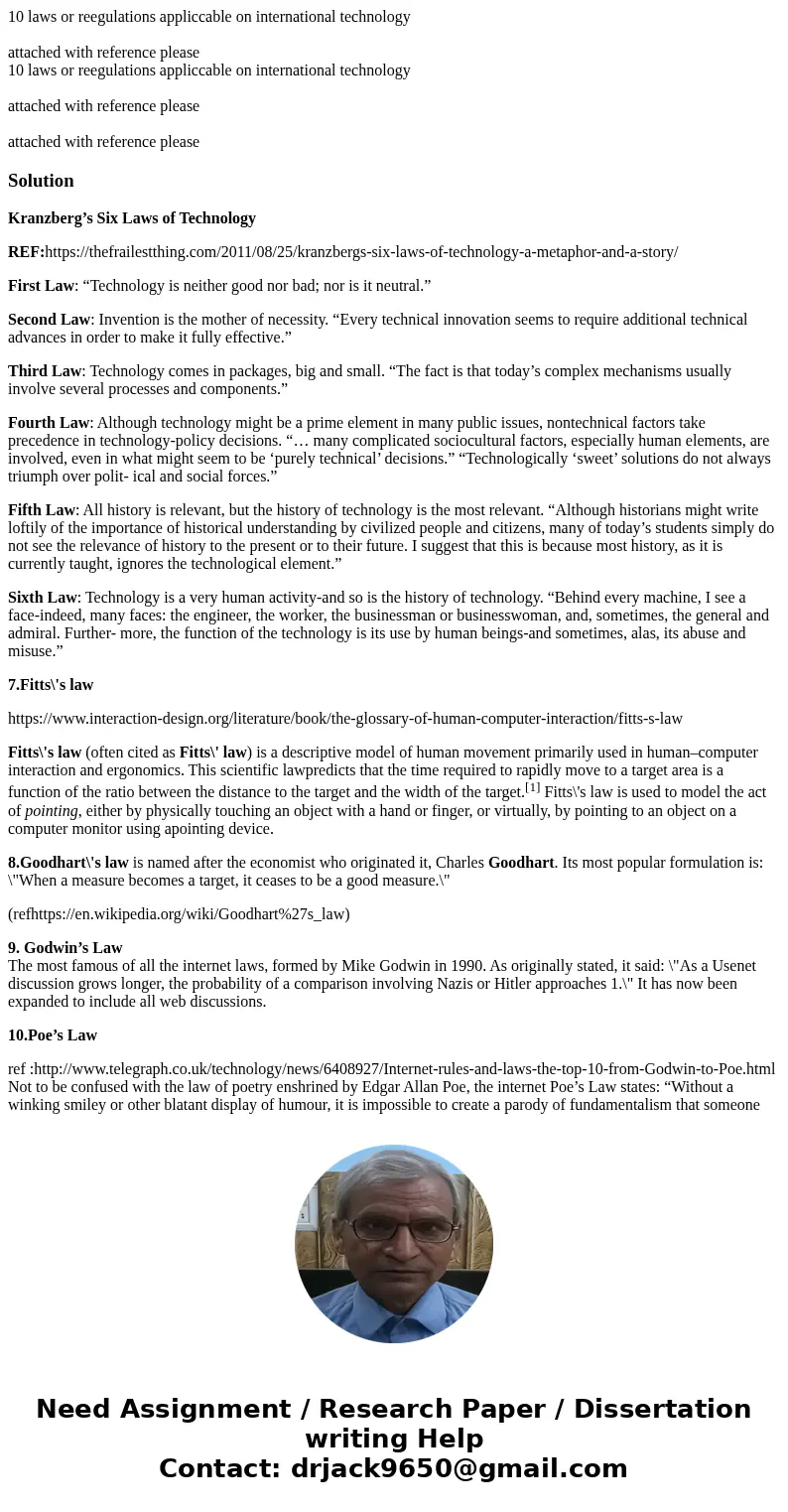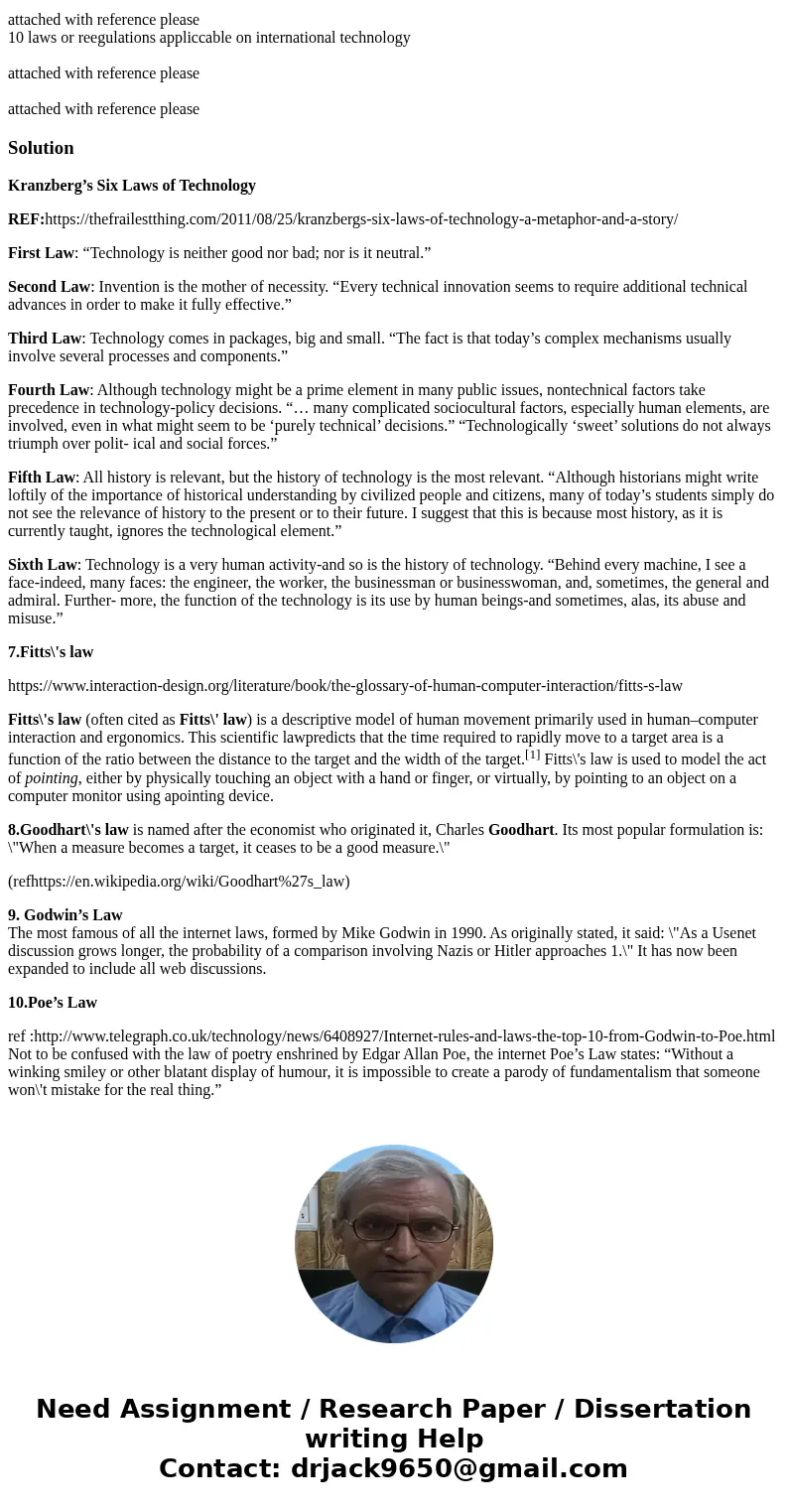10 laws or reegulations appliccable on international technol
Solution
Kranzberg’s Six Laws of Technology
REF:https://thefrailestthing.com/2011/08/25/kranzbergs-six-laws-of-technology-a-metaphor-and-a-story/
First Law: “Technology is neither good nor bad; nor is it neutral.”
Second Law: Invention is the mother of necessity. “Every technical innovation seems to require additional technical advances in order to make it fully effective.”
Third Law: Technology comes in packages, big and small. “The fact is that today’s complex mechanisms usually involve several processes and components.”
Fourth Law: Although technology might be a prime element in many public issues, nontechnical factors take precedence in technology-policy decisions. “… many complicated sociocultural factors, especially human elements, are involved, even in what might seem to be ‘purely technical’ decisions.” “Technologically ‘sweet’ solutions do not always triumph over polit- ical and social forces.”
Fifth Law: All history is relevant, but the history of technology is the most relevant. “Although historians might write loftily of the importance of historical understanding by civilized people and citizens, many of today’s students simply do not see the relevance of history to the present or to their future. I suggest that this is because most history, as it is currently taught, ignores the technological element.”
Sixth Law: Technology is a very human activity-and so is the history of technology. “Behind every machine, I see a face-indeed, many faces: the engineer, the worker, the businessman or businesswoman, and, sometimes, the general and admiral. Further- more, the function of the technology is its use by human beings-and sometimes, alas, its abuse and misuse.”
7.Fitts\'s law
https://www.interaction-design.org/literature/book/the-glossary-of-human-computer-interaction/fitts-s-law
Fitts\'s law (often cited as Fitts\' law) is a descriptive model of human movement primarily used in human–computer interaction and ergonomics. This scientific lawpredicts that the time required to rapidly move to a target area is a function of the ratio between the distance to the target and the width of the target.[1] Fitts\'s law is used to model the act of pointing, either by physically touching an object with a hand or finger, or virtually, by pointing to an object on a computer monitor using apointing device.
8.Goodhart\'s law is named after the economist who originated it, Charles Goodhart. Its most popular formulation is: \"When a measure becomes a target, it ceases to be a good measure.\"
(refhttps://en.wikipedia.org/wiki/Goodhart%27s_law)
9. Godwin’s Law
The most famous of all the internet laws, formed by Mike Godwin in 1990. As originally stated, it said: \"As a Usenet discussion grows longer, the probability of a comparison involving Nazis or Hitler approaches 1.\" It has now been expanded to include all web discussions.
10.Poe’s Law
ref :http://www.telegraph.co.uk/technology/news/6408927/Internet-rules-and-laws-the-top-10-from-Godwin-to-Poe.html
Not to be confused with the law of poetry enshrined by Edgar Allan Poe, the internet Poe’s Law states: “Without a winking smiley or other blatant display of humour, it is impossible to create a parody of fundamentalism that someone won\'t mistake for the real thing.”


 Homework Sourse
Homework Sourse